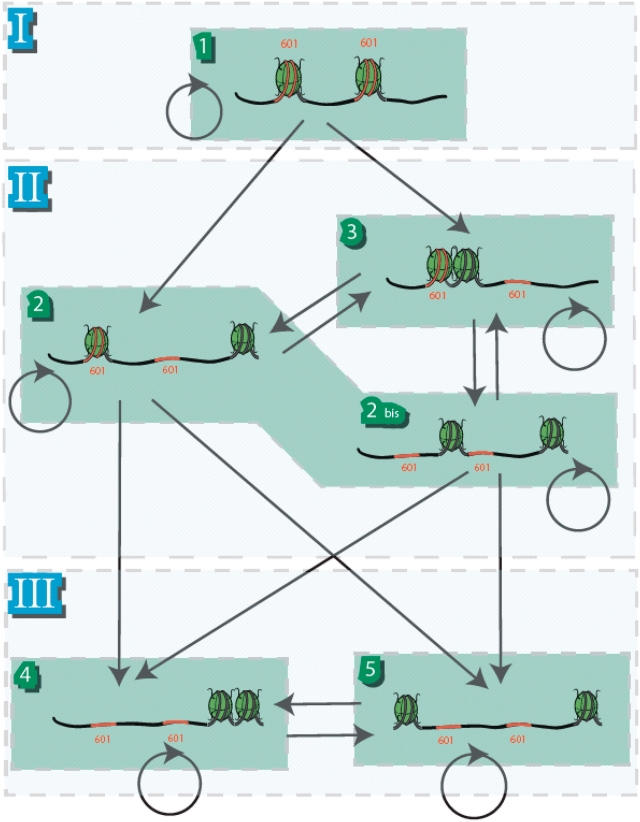Figure 4.
Kinetic scheme showing the various states produced by RSC sliding of dinucleosomes. The States #1–#5 have been constructed based on the quantized dinucleosomal states observed on the AFM images. The groups I to III are indicated as defined from the experimentally observed States #1–#5, and correspond to initial (group I = State #1), intermediate (group II = States #2 and #3) and final (group III = States #4 and #5) state groups. The transitions arise from the simple rule for elementary nucleosome motion induced by RSC on a positioned di-nucleosome: a remodeled nucleosome moves processively out of its original position until it encounters either another nucleosome or the end of the naked DNA arm and then stop. Circular transitions correspond to iterations where the dinucleosome state is unchanged as a result of RSC action. Note that States #2 and #2bis are experimentally indistinguishable. The positions of the 601 positioning sequences are indicated in red, but are not to scale.

